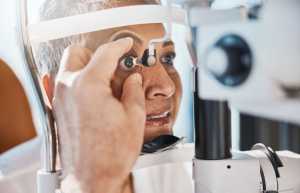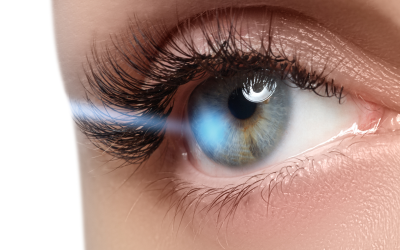Diabetic retinopathy occurs in approximately 30% of people living with diabetes. It is one of the leading preventable causes of vision impairment and vision loss among adults.
Early detection is crucial in treating diabetic retinopathy. Having an understanding of the different grades of diabetic retinopathy and being aware of your current grade is also important so that you can get the most effective care to protect your vision.
What is Diabetic Retinopathy?
Diabetic retinopathy is a complication of diabetes caused by high blood sugar levels, which damage the retina (the light-sensitive tissue at the back of the eye). If left untreated, it can lead to vision loss or blindness.
The good news is that diabetic retinopathy typically develops gradually, often over several years. Detection through diabetic eye screening, along with lifestyle changes and appropriate treatment, can significantly reduce the likelihood of the condition progressing to a stage that threatens your sight.
The main grades of diabetic retinopathy are described below. It’s important to note that not everyone with diabetes will experience all these stages.

Grade 1: Background Retinopathy
Background retinopathy is the earliest stage of the condition. It occurs when tiny bulges (microaneurysms) develop in the blood vessels of the retina. These bulges may leak small amounts of blood.This is very common in people with diabetes.
While treatment isn’t necessary at this grade, it’s vital to take steps to prevent the condition from worsening. The chances of your sight getting worse are higher if both of your eyes are affected. Maintaining good blood sugar control and attending regular screening appointments are key to protecting your eyesight.
Grade 2: Pre-proliferative Retinopathy
This grade of diabetic retinopathy is more advanced, characterised by more extensive changes in the retina, including bleeding.
At this grade of diabetic retinopathy, the risk of vision impairment increases. You may be advised to have more frequent diabetic eye screening appointments, which could be scheduled every 3, 6, 9, or 12 months depending on the severity of the changes detected. Close monitoring is essential to assess any further progression.
Grade 3: Proliferative Retinopathy
Proliferative retinopathy is a severe grade where new blood vessels and scar tissue form on the retina. These fragile blood vessels can cause significant bleeding and may lead to retinal detachment, a condition where the retina separates from the back of the eye.
By this grade of diabetic retinopathy, there is a very high risk of vision loss. Treatment will be offered to stabilise vision as much as possible, although any vision that has already been lost cannot be restored.
Diabetic Maculopathy
Alternatively, diabetic maculopathy can also develop when the blood vessels in the macula (the central part of the retina responsible for sharp vision) become blocked or begin to leak fluid.
If this is detected, there is a substantial risk of vision impairment. At this point you may be recommended more frequent eye examinations and possibly an optical coherence tomography (OCT) scan to assess the extent of the damage.

Still wondering which grade you are?
If you’ve had a diabetic eye screening test, you’ll be informed of your grade thereafter. Your results will clarify the presence and grade of diabetic retinopathy.
Here’s what you’ll be told:
No Retinopathy – no signs of retinopathy were found and you should attend your next screening appointment when invited
Background Retinopathy – this is grade 1 retinopathy and should attend your next screening appointment in 12 months; you may be seen sooner if your diabetes is not well controlled
Degrees of referable retinopathy – now you have grade 2 or 3 retinopathy, or diabetic maculopathy, and should have more frequent tests or be referred to a specialist about treatment.
Your eyes deserve the best care. At Visio Health Clinic, we specialise in diabetic eye screening, consultations, and the management of diabetic retinopathy. Early detection and proactive treatment can make all the difference in preserving your sight.
Book your appointment today and let our expert team guide you towards maintaining healthy vision. Don’t wait—protect your eyes for the future.
Contact us now to schedule your diabetic eye screening or consultation.




















